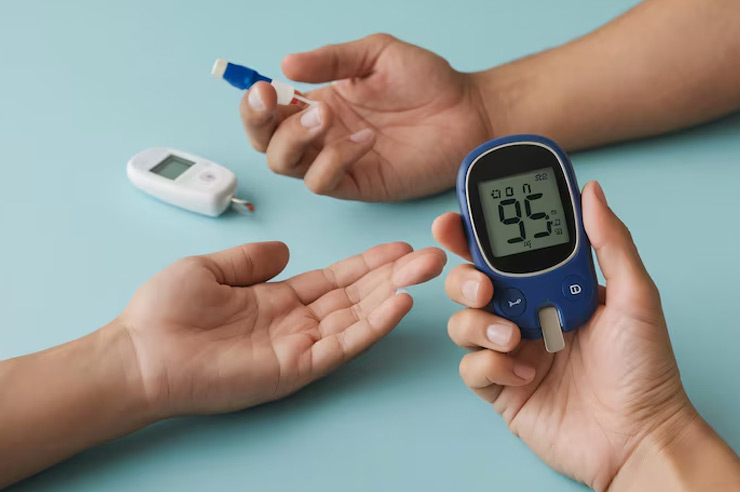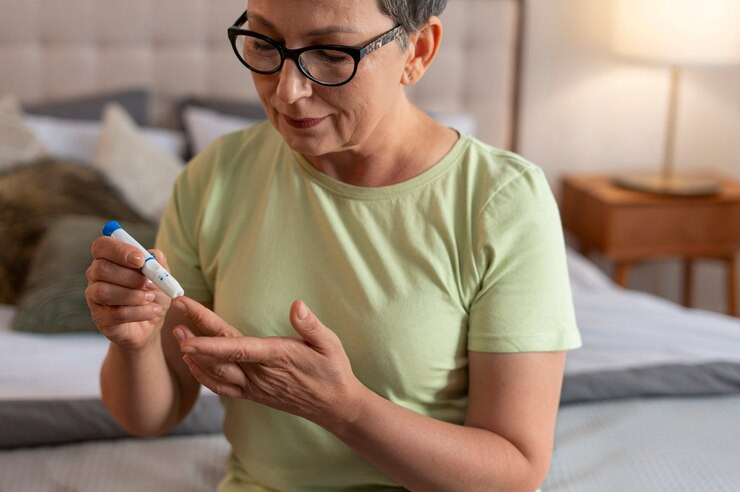Revitalize your health naturally with Ayurvedic solutions for metabolic balance!

Lifestyle Metabolic Disorders
The global interest in Ayurveda is on the rise, as it stands out as a crucial life science that offers effective strategies for preventing and managing lifestyle-related illnesses. Through proper dietary management, lifestyle recommendations, and specialized treatments such as Panchakarma—which encompasses detoxification and bio-purification—Ayurveda provides comprehensive solutions for overall well-being.
To address lifestyle disorders, Ayurveda presents various regimens, including Dinacharya (daily routines), Ritucharya (seasonal practices), Panchakarma (five detoxification therapies), and Rasayana (rejuvenation) therapies. Additionally, Sadvritta (ideal behavior) and Aachara Rasayana (conduct guidelines) play essential roles in maintaining a balanced mental outlook. The synergistic use of these therapeutic approaches significantly influences the management of lifestyle disorders. Moreover, the incorporation of organ-specific Rasayana herbs not only aids in disease prevention but also promotes health and recovery.
By targeting the root causes of ailments, Ayurveda offers a distinct advantage in treatment. Ayurvedic practitioners are dedicated to fulfilling the goals of health promotion, disease prevention, and effective management, fostering a healthier and happier society.k
Diabetes
Diabetes is a prevalent and challenging health concern affecting individuals worldwide, with approximately 11% of the global population impacted by this condition. Managing diabetes can be difficult, but it is certainly not impossible.
In Ayurveda, diabetes is linked to an imbalance in Vata, which can lead to the leakage of Oja into the urine. This condition often emerges in older adults as the body’s Dhatus gradually deteriorate.
Three thousand years ago, ancient scholars Acharya Charak and Sushruta identified the presence of sugar in urine as a result of elevated blood sugar levels. Their texts, the Charak and Sushruta Samhitas, provide a systematic approach to assessing blood and urine sugar levels. Acharya Sushruta described the urine of a diabetic as honey-colored, while Acharya Charak noted that ants would be attracted to the urine, highlighting its sweetness: “Tanoratah madhuryachcha evam makshikopasarpenasharira madhuryam.”




Signs and Symptoms of Diabetes
Increased Thirst (Polydipsia): A prolonged thirst despite consuming fluids.
Polyuria: Excessive urine, particularly at night.
Extreme Hunger (Polyphagia): Increased hunger despite eating.
Fatigue: refers to unusual exhaustion and lack of energy.
Blurred Vision: Changes in vision, most commonly caused by fluid changes in the eye.
Slow-Healing Wounds: cuts or bruises that take longer to heal.
Numbness or Tingling: The feeling of numbness or tingling in the hands or feet.
Dry skin: refers to persistent dryness and itching.
Unexpected Weight Loss: Losing weight without trying, particularly in those with type 1 diabetes.
Causes of Diabetes
Type One Diabetes:
An autoimmune reaction that kills insulin-producing beta cells in the pancreas.
Genetic factors may be involved.
Type II Diabetes:
Insulin resistance takes place when the body fails to use insulin properly.
Obesity, physical inactivity, a poor diet, and hereditary predisposition are all contributing factors.
Gestational Diabetes:
-
Develops during pregnancy as a result of hormonal changes that alter insulin.
-
Obesity, a diabetes-related family history, and prior gestational diabetes are all risk factors.
Other factors:
Age: Risk rises with age.
Hormonal disorders include Cushing’s syndrome and polycystic ovarian syndrome (PCOS).
Panchakarma therapies for Diabetes
Panchakarma therapies offer a holistic approach to managing diabetes by addressing its root causes and promoting overall health. This traditional Ayurvedic detoxification process includes five key treatments: Vamana (therapeutic vomiting), Vikriti (purging), Basti (medicated enema), Nasya (nasal administration of medicated oils), and Raktamokshana (bloodletting). Each therapy is tailored to balance the doshas, particularly Vata and Kapha, which are often aggravated in diabetes. Vamana helps eliminate excess mucus and toxins, while Basti rejuvenates the body by cleansing the intestines and regulating metabolism. Nasya aids in respiratory health and enhances the sense of taste, which can be beneficial for diabetic patients. Raktamokshana purifies the blood, helping to lower sugar levels. By harmonizing the body’s systems and improving digestion, Panchakarma therapies can significantly contribute to better management of diabetes and enhance the quality of life for those affected by the condition.

Hypertension
Hypertension, commonly known as high blood pressure, is a widespread and significant health issue that affects millions of people globally. It is often referred to as a “silent killer” because it frequently presents with no symptoms, yet it can lead to serious complications such as heart disease, stroke, and kidney damage.
According to the World Health Organization (WHO), nearly 1.13 billion people worldwide have hypertension, and only about 1 in 5 have it under control. Factors contributing to hypertension include poor diet, lack of physical activity, obesity, smoking, and excessive alcohol consumption.
In Ayurveda, hypertension is often associated with an imbalance in the body’s Doshas, particularly Pitta and Vata. It is believed that stress and lifestyle choices can aggravate these Doshas, leading to increased blood pressure. Ayurvedic treatments may include dietary modifications, herbal remedies, yoga, and meditation to restore balance and improve overall health.
Regular monitoring of blood pressure, along with lifestyle changes and medical management when necessary, can help manage hypertension effectively and reduce the risk of related health issues.

Symptoms
Ayurvedic therapies that can help manage hypertension:

Panchakarma
A comprehensive detoxification process that includes five therapies: Vamana (therapeutic vomiting), Virechana (purging), Basti (enema), Nasya (nasal administration), and Raktamokshana (bloodletting). These treatments help cleanse the body and restore balance.

Udwarthanam
A dry massage with herbal powders that stimulates circulation and helps reduce excess fat and toxins from the body, contributing to better blood pressure control.

Shodhana Therapy
A purification therapy that focuses on detoxifying the body through various methods, including herbal treatments and dietary changes, to reduce excess doshas (energetic forces) that contribute to hypertension.

Swedana
Herbal steam therapy that promotes sweating, aiding in the elimination of toxins and improving circulation, which can help in managing blood pressure.
Thyroid
Thyroid imbalances, including hypothyroidism (underactive thyroid) and hyperthyroidism (overactive thyroid), have become increasingly common in today’s fast-paced world. These conditions affect metabolism, energy levels, and overall well-being. Ayurveda, an ancient holistic healing system, offers a natural and personalized approach to managing thyroid health by balancing the body’s energies, or doshas, and addressing the root causes of imbalance.
Understanding Thyroid in Ayurveda
In Ayurveda, the thyroid gland is closely linked to the Vishuddha (throat) chakra, which governs communication and self-expression. Thyroid imbalances are seen as a disruption in the body’s natural energies—primarily the Pitta and Kapha doshas, which regulate metabolism and structural stability.
Hypothyroidism is often associated with a Kapha imbalance, leading to symptoms like weight gain, fatigue, depression, and sluggish metabolism.
Hyperthyroidism is linked to an aggravated Pitta dosha, resulting in excessive energy, weight loss, irritability, and insomnia.
Herbal Remedies
Ayurveda uses various herbs to support thyroid function and balance the body’s energy:

Dietary Recommendations
Diet plays a major role in managing thyroid in Ayurveda. The focus is on balancing Kapha and Pitta doshas with the right foods:

For Hypothyroidism
- Include warming, light, and stimulating foods like ginger, black pepper, turmeric, and leafy greens.
- Avoid cold, heavy, and processed foods like dairy, refined sugars, and fried foods.
- Incorporate seaweed and iodine-rich foods to support thyroid function.
For Hyperthyroidism
- Focus on cooling, calming, and nourishing foods like cucumber, coconut water, melons, and dairy.
- Avoid spicy, sour, and salty foods that aggravate the Pitta dosha.
- Include ghee and sweet fruits like berries and pears to nourish the body.
Lifestyle Practices
Ayurveda emphasizes daily routines (Dinacharya) and lifestyle changes to support thyroid balance:

Panchakarma Therapy
Medi9 Ayurvedic Hospital offers comprehensive and personalized Ayurvedic treatments, focusing on holistic healing and detoxification. With a team of skilled practitioners and a commitment to patient care, it aims to restore balance and promote overall wellness. Experience the transformative power of Ayurveda for a healthier, happier life at Medi9.
